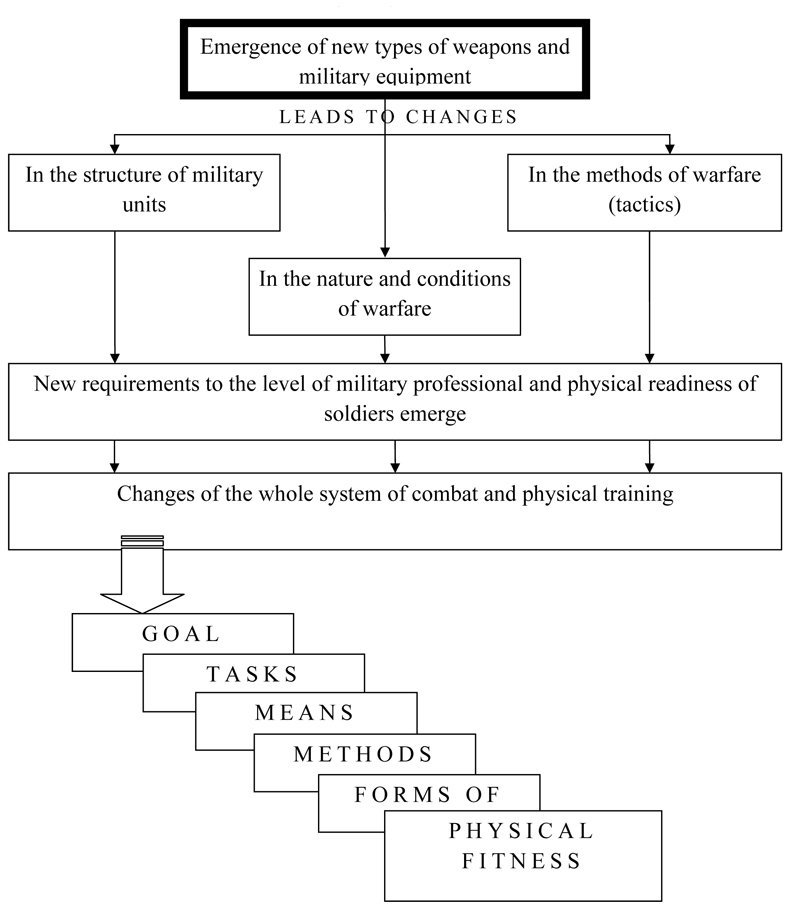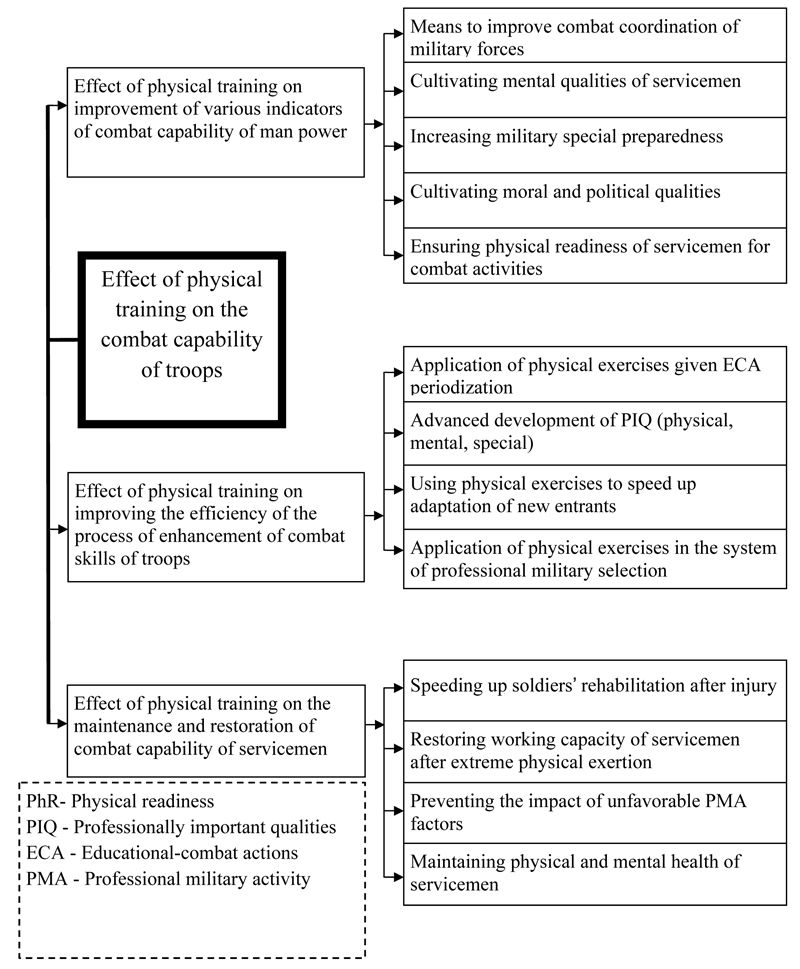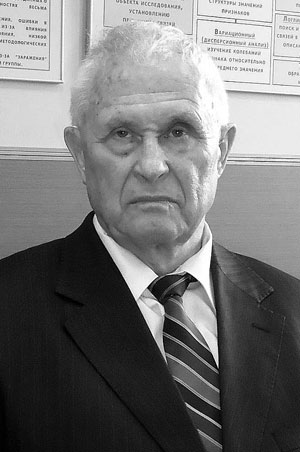Physical Training - Applied Aspect of Physical Education, Sport Training, Recreational and Adaptive Physical Culture
Фотографии:
ˑ:
V.V. Mironov, professor, Dr.Hab.
Military Institute of Physical Culture
Military medical academy named after S.M. Kirov, St. Petersburg
Key words: physical training, physical culture, physical education, sports training, physical recreation and therapeutic physical culture, educational-combat actions.
Introduction
Relevance of the study. Physical culture as a complex social phenomenon is getting more widely used in the world. It represents the process and the result of accumulation and transfer of material and moral values from one generation to another, which are aimed at physical and moral development of the rising generation, protection of health of different population segments and introducing them to healthy lifestyle; formation of the personal physical culture and finally at the realization of the healthy people’s potential.
The goal of the “Strategy of development of physical culture and sport in the Russian Federation up to 2020” [14] is to involve about 40% of Russian citizens in physical exercises. It is a matter of great importance, because the problem with the health of the rising generation is clearly urgent. Lack of motor activity, genic and social factors, bad ecology and bad habits lead to serious diseases among youth, in this case we can see the downward dynamics. For example, in 2001 25% of young people at the age of 13-18 were drug-addicted in a number of Russian regions. Almost 60% of junior children and about 53% of pupils of comprehensive schools have weak health. Almost 50% of recruits can not do the physical fitness test and about 25% are non-effective [15].
According to the State Statistics Service of the Russian Federation only 17% of comprehensive school leavers are assigned to “healthy” or “practically healthy” groups. Currently, out of 6 million teenagers aged 15-17, various diseases were detected in 94,5%; according to the Ministry of Health Care and Social Development of the Russian Federation only 10% of school leavers are considered healthy; over the past 10 years, the number of girls having chronic diseases increased from 40% to 70% [3]. Over 30% of boys are non-effective.
Physical training of servicemen reflects the applied aspect of physical education, providing physical readiness to address combat and other goals in accordance with their mission (motorized infantry, tank crews, paratroopers, sailors, missile troops, etc.).
The purpose of the study was to clarify the role of physical training in maintaining combat readiness of servicemen, to understand the directions and mechanism of influence of physical exercises onto their bodies.
Physical training as a discipline of combat training of troops, as part of military training and education, military art as a whole has its own history. It appeared along with the emergence of regular military units, adequately reflecting the nature of combat requirements to the physical condition of soldiers. Change of weapons, emergence of new combat equipment inevitably entailed new requirements to combat tactics, methods of man power training and level of physical fitness of soldiers. Different historical conditions corresponded to various physical training systems [13].
Armed forces of any country have always taken advantage of technical progress. Therefore, emergence of new types of weapons and military equipment has always led to a revision of combat tactics, changes in the structure of military units, search for new ways of teaching soldiers and adequate methods and techniques of improvement of motor skills of servicemen that maintain their physical and combat readiness (Fig. 1).
At present the adaptation theory [1, 6, 7, 9, 10, 11] and the concept of transfer of preparedness (fitness) [16] as well as their interrelation and interdependence [13] serve as the objective basis that reveals the mechanism of influence of physical training on the combat capability of the troops. Adaptation and transfer of preparedness are closely related, that being expressed by the philosophical categories of “essence-phenomenon” and “content-form”.
Adaptation as a psychophysiological mechanism of adjusting to the effects of the environment reflects the essence of the underlying processes and defines the meaning of their content, and the transfer of preparedness should be considered as a phenomenon of this essence and the form of content manifestation.
The functional systems concept [2, 3] is an important element in understanding the essence and mechanisms of transfer of preparedness of servicemen. A functional system is an emergency center-peripheral formation that ensures the realization of any behavioral act (active relationship of the body with the environment).

Figure 1. Historical conditionality of physical training development in connection with the laws of development of military affairs
In a situation when the body is influenced by a potent factor (strenuous muscular work, poisons, toxins, high and ultra-high frequency currents, oxygen deficiency), along with specific homeostatic reactions there exist others, not related to the specificity of impact. Nonspecific reactions constitute a mechanism of general adaptation. Research results show that in case of artificial “switching off” of these reactions the body’s resistance drops sharply. Consequently, nonspecific reactions also have a significant adaptive value. Their activation indicates stress - exertion of functions in the body. In addition, nonspecific adaptation reactions contribute to the increase of the overall body’s defenses, that being associated with a change in its immunological status [5, 12].
The essence of adaptation is to reveal the mechanisms which help to transform an untrained body into trained, i.e. able to perform muscular work of such intensity or duration that is beyond the scope of an untrained one, and to perform it more efficiently, involving less functional reserves and with increased resistance to damaging influences and unfavorable factors [3].
In general, physical exercises have a positive effect on the body of serviceman, and doing them systematically leads to a number of effects that contribute to improved adaptive-regulatory mechanisms:
- economizing effect (decrease of the cost of work, more economical cardiac activity, etc);
- antihypoxic effect (improving blood supply of tissues, a greater range of ventilation therapy, an increase in the number of mitochondria, etc);
- anti-stress effect (an increase of stability of the hypothalamic-pituitary system, etc);
- gene regulatory effect (activation of synthesis of many proteins, cell hypertrophy, etc);
- psychoenergizing effect (increased mental capacity, predominance of positive emotions, etc) [5, 7].
The results of research by research conducted by workers and candidates of Military Institute of Physical Culture in the last 60 years show that under the influence of physical exercises concentrated in pilot programs of physical training positive results are received in terms of improving professionally important physical and special qualities, mental personality traits, professionally-applied motor skills that maintain and increase combat capability of military personnel in various kinds and types of troops. About 500 Ph.D. and doctoral theses were defended during this period. The effect of physical exercises on various combat capability indicators takes place in many areas (Fig. 2).
Centuries of experience in the field of warfare and combat training of the army and navy serve as convincing evidence that physical training of servicemen, being an integral part of the system of combat improvement of troops, plays an important role in increasing the combat capability of military units. Various qualities, properties and skills generated in the process of physical training have a very beneficial effect on the success of educational-combat actions of man power.

Figure 2. Effect of physical training on the combat capability of troops
At present, this phenomenon is most often explained from the position of the so-called transfer of preparedness of servicemen [13, 17, 18].
Transfer of fitness (preparedness) is a from of manifestation of the impact of physical exercises on the body of those involved, that led to formation of a mechanism of adaptation to loads of different intensity. After all, no one doubts that systematic trainings in forced marches of 5 and 10 km during physical training classes, that result in the formation of a mechanism of adaptation to loads of different power, provide a direct transfer of preparedness to actions of motorized infantry, paratroopers, marines in the attack, in the depth of the enemy defense. Similarly, the mechanism of direct transfer of preparedness manifests itself when throwing grenades, overcoming obstacles, running close combat, swimming in the uniform during physical training classes with the implementation of the same techniques while conducting combat in a populated locality, in the trenches at the forefront of the enemy, while crossing water obstacles with the help of expedient means.
However, it should be explained to commanders and specialists in physical training that it is necessary to include in the training programs such exercises as running for 400 m, 1 and 3 km, ski race for 5 and 10 km for man power of ships and especially submarines, Air Force aircrew, Strategic Rocket Forces and aerospace defence operators, as their professional activity does not provide for such methods and actions. The explanation may be based on the fact that a formed mechanism of adaptation to loads of sub maximal and high power during physical training classes is needed not for the sake of physical perfection but in order to counter physical inactivity, hypoxia, monotony and sensory deprivation. This is due to the fact that in this case a mediated transfer from one kind of activity to another expresses the outer face of adaptation and is a form of manifestation and expression of its content as the cumulative effect of the systematic impacts of such loads resulting in the expansion of functional reserves of the cardiorespiratory system and, as a consequence, in the improvement of their professional working capacity.
Conclusion
Thus, according to the literature review and the findings of researches, physical culture as a versatile public phenomenon includes applied professional physical culture, being implemented in the form of an educational process of special orientation in the training system for athletes and specialists of different specializations, that needs a higher physical fitness level to maintain professional performance.
Physical training of servicemen covers a wide range of impact of physical exercises on the bodies of those involved. It helps to speed up adaptation of new entrants to unfamiliar conditions of military service and the environment, formation of professionally important motor skills, development of physical qualities, mental personality traits, resistance to the impact of adverse factors of professional military activity, organization of active recreation of servicemen after extreme physical load and mental stress, restoration of temporarily lost functions after traumas, diseases and injuries.
References
- Adaptation to physical loads and transfer of fitness of servicemen - the objective basis for the influence of physical training on fighting efficiency of troops // Aktual’nye problemy fizicheskoy i spetsial’noy podgotovki silovykh struktur. – St. Petersburg: MIPC, 2013. – № 1. – P. 18–22. (In Russian)
- Agadzhanyan, N.A. Criteria of adaptation and man’s ecoportrait. - In. Physiological and clinical issues of adaptation, hypodynamics and hyperthermia. V.1. Moscow. – Moscow, 1981. – V. 1. – P. 19–27. (In Russian)
- Anokhin, P.K. System mechanisms of higher nervous activity. - Moscow: Nauka, 1979. – 453 P. (In Russian)
- Bishaeva, A.A. Professional physical recreation of students: study guide / A.A. Bishaeva. – Moscow: KNORUS, 2013. – 204 P. (In Russian)
- Endal’tsev, B.V. Physical culture, health and human physical working capacity in extreme environmental conditions: Monograph / B.V. Endal’tsev. – St. Petersburg: MIPC, 2008. – 197 P. (In Russian)
- Meerson, F.Z. Adaptation, stress and prevention / F.Z. Meerson. – Moscow: Nauka, 1981. – 238 P. (In Russian)
- Medvedev, V.I. The doctrine on adaptation and its value in military medicine / V.I. Medvedev. – Leningrad: Kirov MMA, 1983. – 24 P. (In Russian)
- Mironov, V.V. Actual problems of theory and methodology of physical education, sports training, physical recreation and adaptive physical culture: Monograph / V.V. Mironov, V.L. Pashuta . – St. Petersburg: MIPC, 2010. – 297 P. (In Russian)
- The strategy of development of physical culture and sport in the Russian Federation up to 2020. (In Russian)
- Sukhanov, A.I. Theory and practice of control of man’s physical status using integrated health and fitness corrections: Monograph / A.I. Sukhanov. – St. Petersburg: St. Petersburg State University, MIPC, 2001. – 141 P. (In Russian)
- Theory and methodology of physical culture: textbook / Ed. by prof. Yu.F. Kuramshin. – 2nd ed, rev. – Moscow: Sovetsky sport, 2004. – 464 P. (In Russian)
- Theory and organization of applied service physical training, physical culture and sport: A Textbook for cadets of the institute / Ed. by prof. V.V. Mironov, A.A. Obvintsev. – St. Petersburg: MIPC, 2013. – 297 P. (In Russian)
Corresponding author: vifk-nic@ya.ru


